Understanding How Raúl Pagès Made A Detent Escapement Truly Wristwatch-Compatible
A closer look at the stunning (visually and mechanically) Raúl Pagès Régulateur à Détente RP1
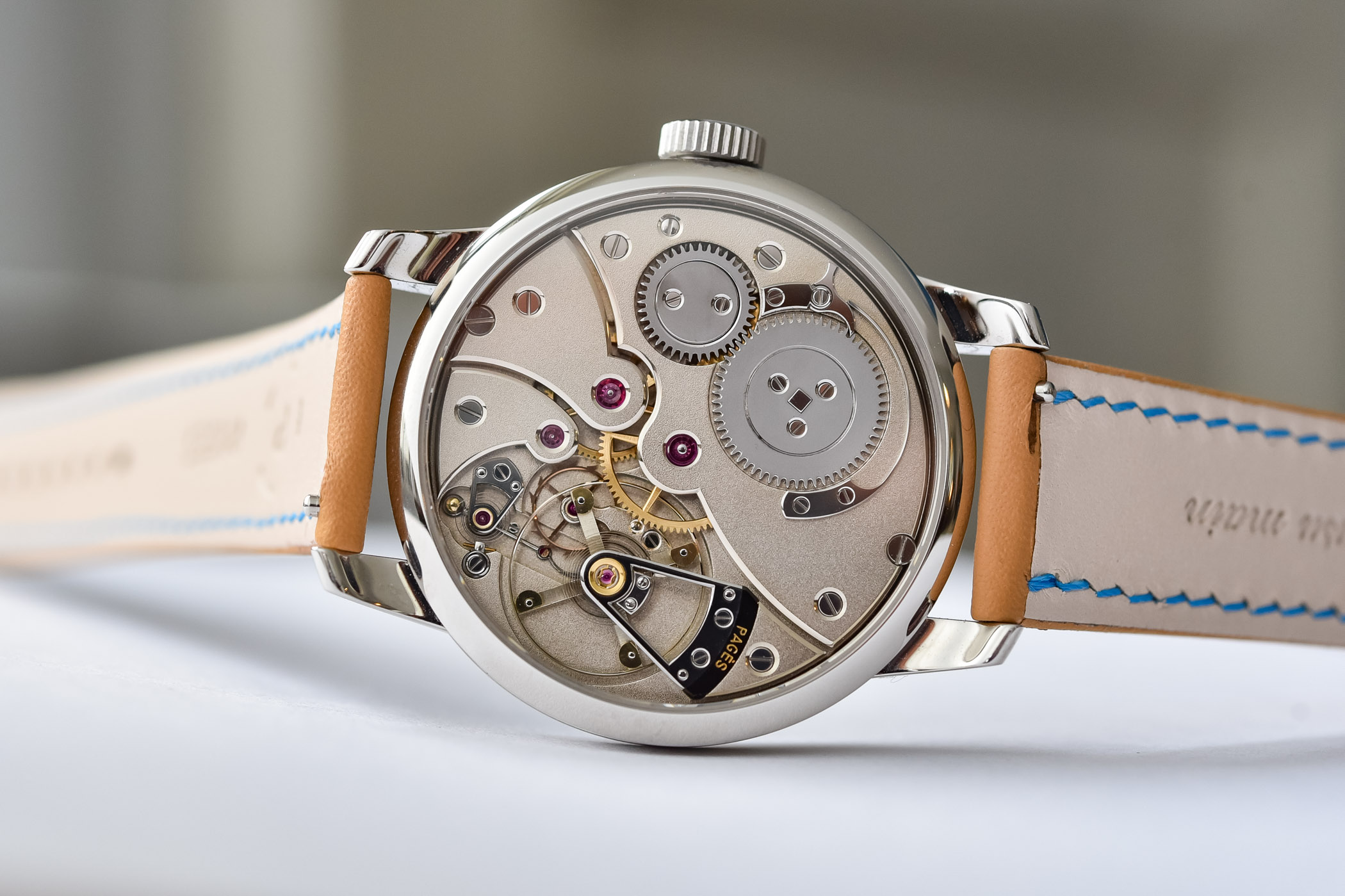
The detent escapement is a grail of chronometry that has rarely been fitted into wristwatches, mainly due to inherent weaknesses – but as with every problem, there is a solution to be found somewhere. So when we learned that independent watchmaker Raúl Pagès was releasing a detent escapement wristwatch with regulator display, it was only a matter of days before we drove the snowy winding road to his workshop… And it was well worth the drive. We take a closer look at the new Raúl Pagès Régulateur à Détente RP1, and mostly, to its fascinating detent escapement.
If you follow the independent watchmaking scene, you are probably familiar with Raúl Pagès. After graduating as a watchmaker, Pagès specialized in restoration and watch complication design. He started his career in 2006 working at Parmigiani Fleurier, in its famed restoration workshop. There, he worked on the restoration of horological masterpieces belonging to the most prestigious collections in the world. Among the marvels he was entrusted with, he discovered animal automata. Fascinated by these astounding objects, he soon decided to create his own tortoise automata (2012). Thanks to a mechanism similar to a watch movement, the masterfully crafted metal tortoise slowly crawls on demand. If it took over one year to complete this intricate robotic reptile, it further fueled his love for the craft. It wasn’t long before he started dreaming of the next step… creating his own wristwatch.
In 2016, Pagès presented a limited series of 10 pieces, the Soberly Onyx, an elegant white gold three-hander fitted with an onyx dial. Standing out for its exceptional hand-finish, its hand-wound movement is based on a Cyma ébauche. The master watchmaker subsequently started the development of his own movement… the Régulateur à Détente RP1.
The detent escapement, and Raúl Pagès’ solution
The detent escapement is often considered a grail of chronometry. It is one of the most accurate types of escapements. Created some 250 years ago, it was mostly used in marine chronometers and a few pocket watches. It has rarely been adapted into wristwatches. It is particularly efficient as it is a direct impulse escapement, which considerably reduces friction compared to the Swiss lever escapement (the escapement that is used in 99% of mechanical watches). Additionally, the balance wheel swings in an undisturbed way during most of its cycle (coup perdu escapement), except the brief impulse period given once per cycle, which has a positive effect on isochronism.
However, the detent escapement has traditionally two weaknesses. First, it is not self-starting so you often need to give your watch a swing to get it started. Secondly, it is vulnerable to shocks. Impacts can inadvertently lift the detent and therefore release the locking pallet stone from the escapement. The unwanted release of the escape wheel can damage the movement or even stop it. This is why it has been mostly confined to marine chronometers and pocket watches, and has rarely been seen in wristwatches, timepieces that are notoriously more subjected to shocks.
Above: The Raúl Pagès pivoted detent escapement with the detent locking the escape wheel (1) and the beak of the detent engaged in the safety roller notch to release the escape wheel (2).
The Raúl Pagès Régulateur à Détente RP1 relies on a pivoted detent escapement, as the detent is pivoted about a pivot axis. It is returned to the rest position by a spiral-shaped return spring. One of its main particularities is that it is fitted with a safety device. Its detent has a special shape and is terminated by a beak. This beak engages with a cut-out in a safety roller mounted on the balance wheel shaft. Thanks to this arrangement, the detent is lifted (and the escape wheel is released) only when the beak of the detent penetrates in this notch. In any other position, in the event of a shock, the beak would rest on the roller and would prevent the escape wheel from being inadvertently released. This solution is based on a patent from Emile James (issued on 5 March 1891) and a similar system has been implemented for instance by Urban Jurgensen for its calibre P8, in the reference 1140C.
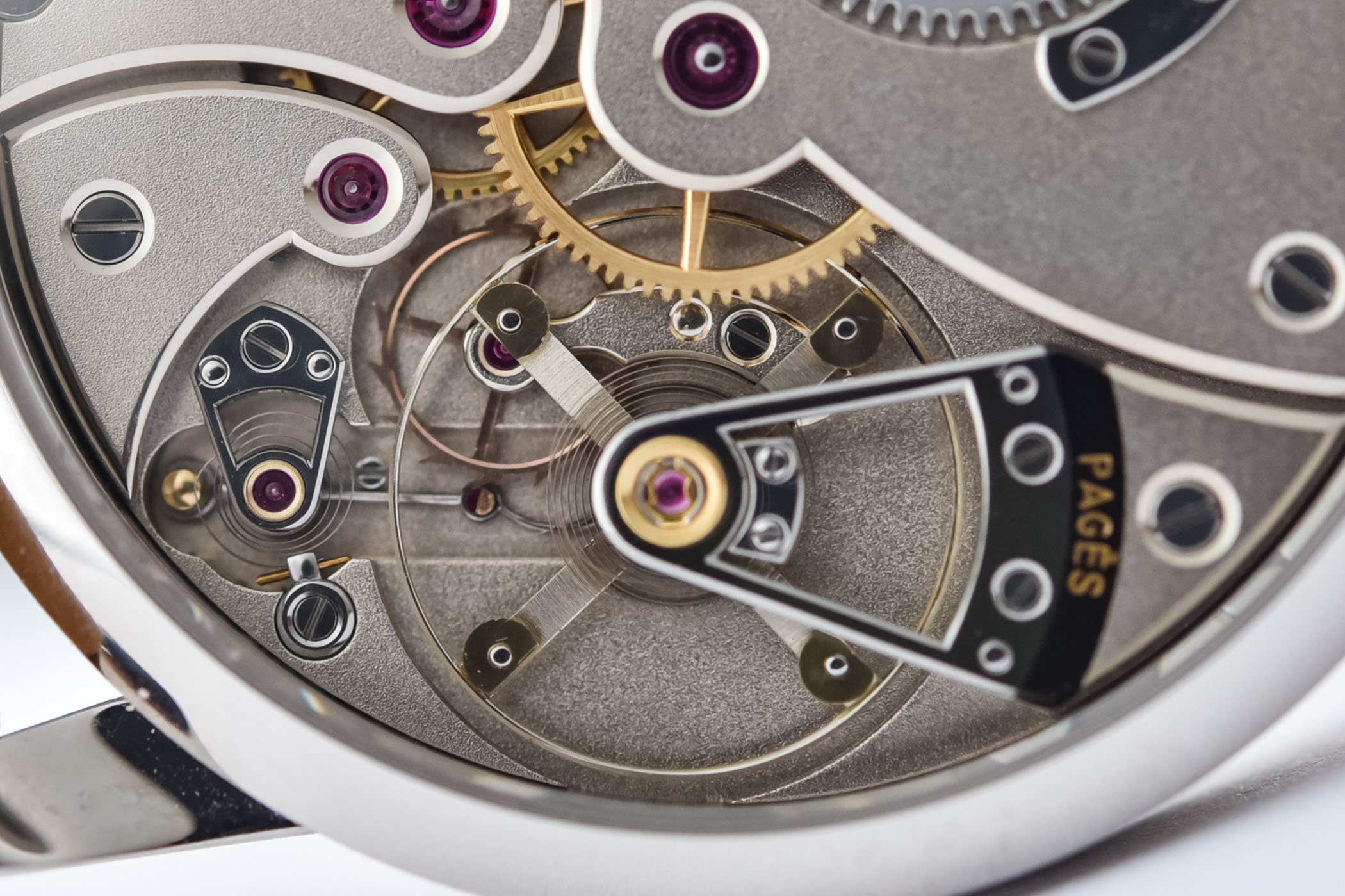
The superb movement powering the Raúl Pagès Régulateur à Détente RP1 is a large (33.6mm x 5.6mm) hand-wound movement. It is almost entirely manufactured by Pagès using traditional techniques. Its manufacturing is extremely delicate and challenging, for instance, the detent spring measures only 0.02mm and is shaped by hand.
The large variable inertia balance wheel runs at 18,000 vibrations/hour so the seconds hand only advances 2.5 times every second – which is half the rate of a Swiss lever movement using the same frequency. The power reserve is given for 47 hours. Visible through the exhibition caseback, it is immaculately finished with large and beautifully polished bevels and jewel sinks, as well as a fine sober grey grené finish. The ratchet and crown wheels feature an original matt finish with polished teeth. The skeletonized cock is mirror polished and features multiple V-shaped angles. The balance wheel and the escapement are a feast for the eyes… and for the ears too, with the characteristic sound of the detente escapement.
And just in case you were wondering if the detent escapement is really resistant to shocks, look at the video below:
Voir cette publication sur Instagram
The Raúl Pagès Régulateur à Détente RP1
This beautiful calibre is presented in an elegant 38.5mm x 10.2mm round steel case with screwed-in lugs. It is nicely finished with polished surfaces for the top of the lugs, the bezel and the caseback, while the middle case is satin-brushed.
As for the dial, Raúl Pagès opted for a régulateur display as a nod to the precision watchmaking tradition. Like for yesteryear precision clocks, each indication is separate, the minute indication taking centerstage. The sand-blasted dial has a pleasing sense of depth. The hours are indicated on a raised hour ring; the minute hand follows a cantilevered chapter ring on the perimeter of the dial; the small seconds are indicated by a hand revolving over a light-blue recessed sub-dial. The rounded polished hands are made by hand too.
The watch comes with two leather straps, one in black and one in beige with light blue stitching. Each one is fitted with a quick-release spring bar. The engraved pin buckle is in stainless steel.
Production isn’t limited, but the watchmaker can only produce about four or five watches a year. At CHF 85,000 excl. taxes, the Raúl Pagès Régulateur à détente RP1 is certainly out of reach for many, but what a fascinating watch…
For more information, please visit pageswatches.com.

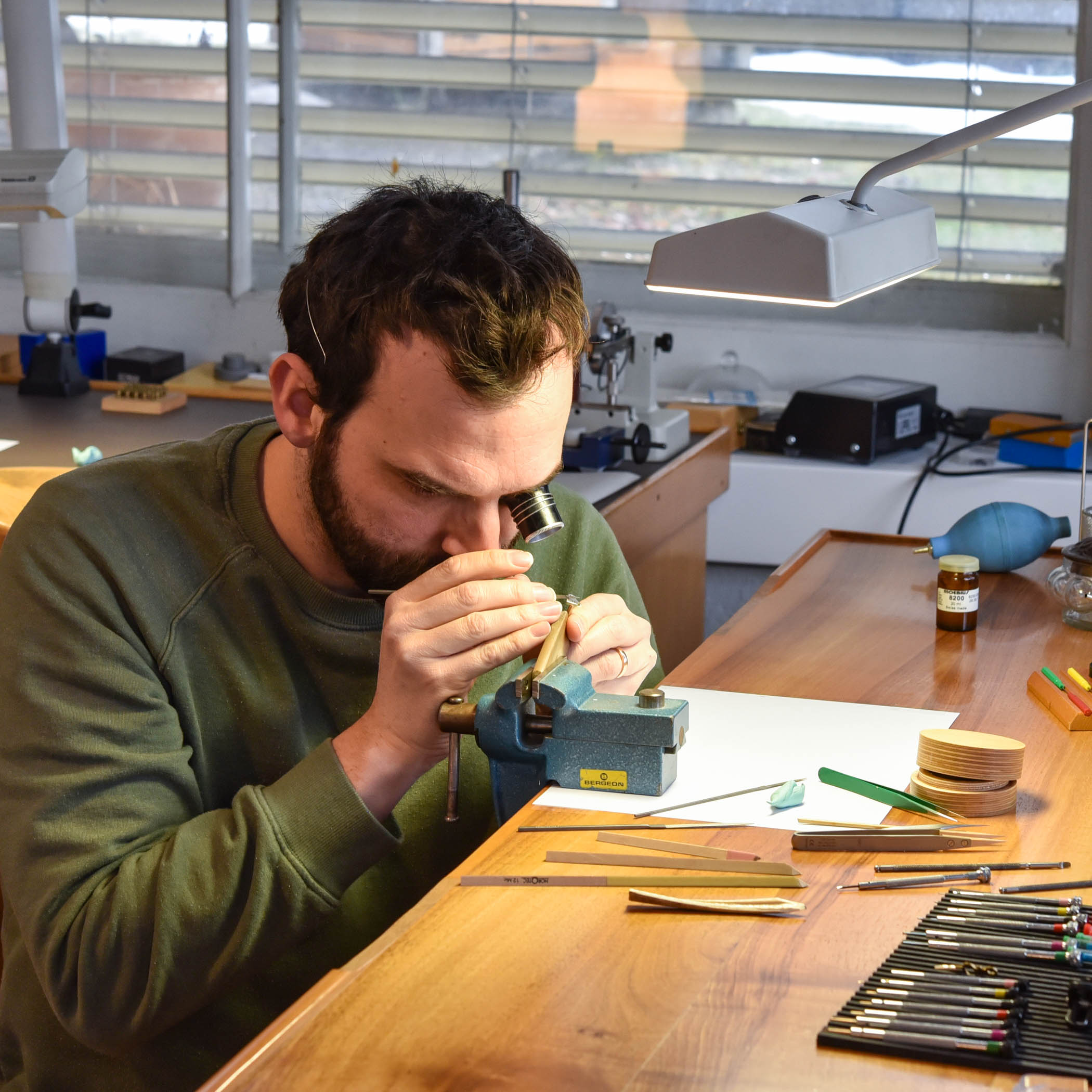
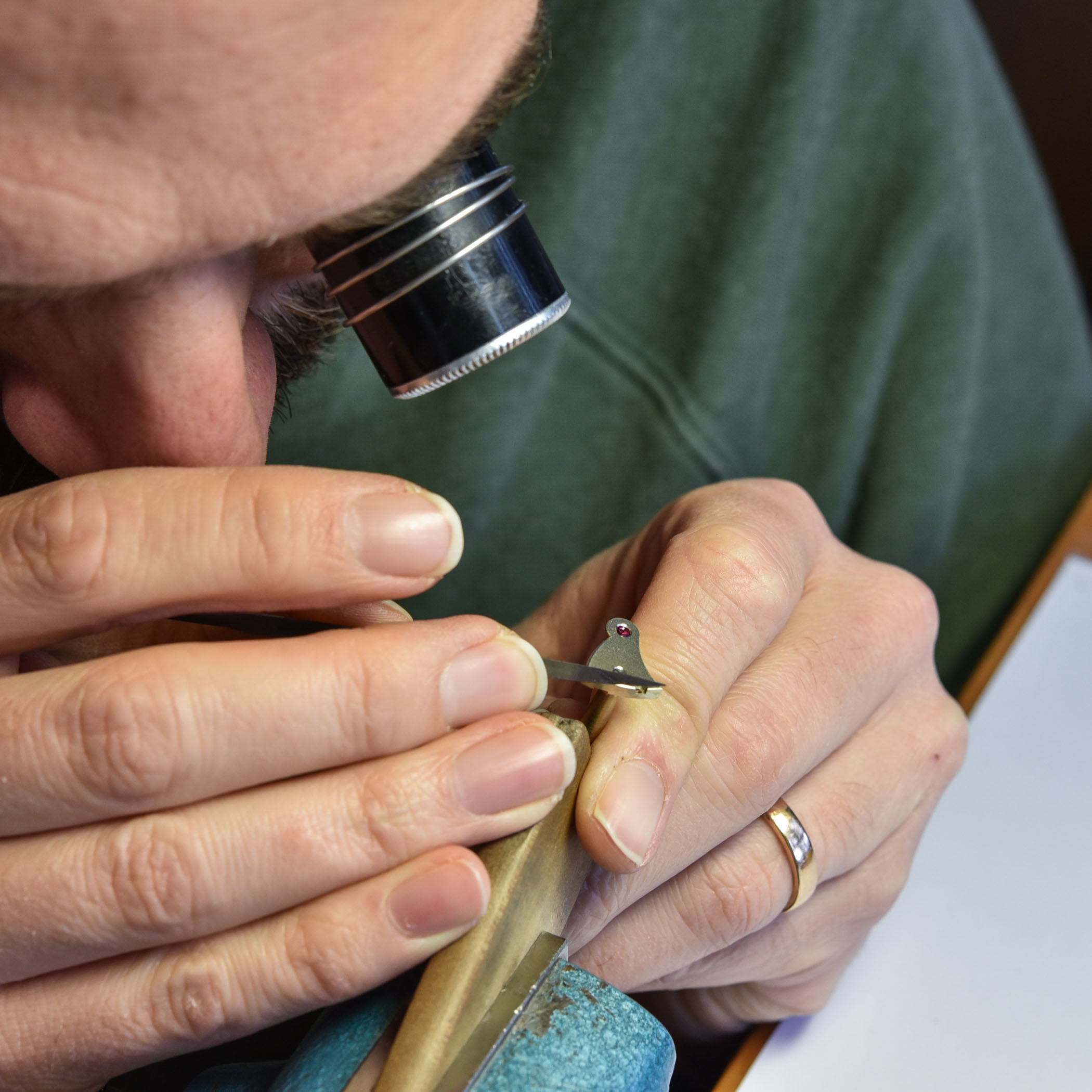
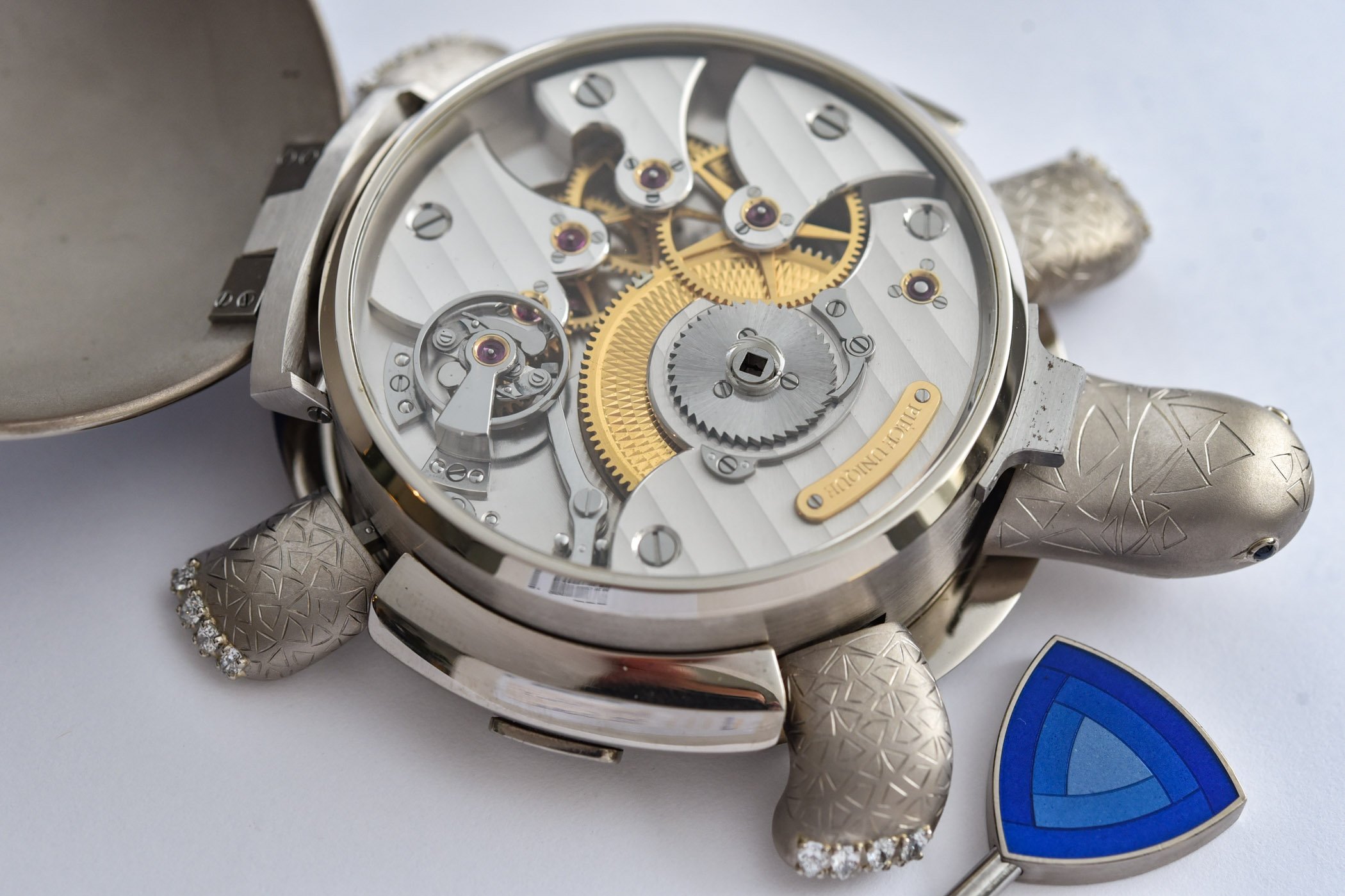
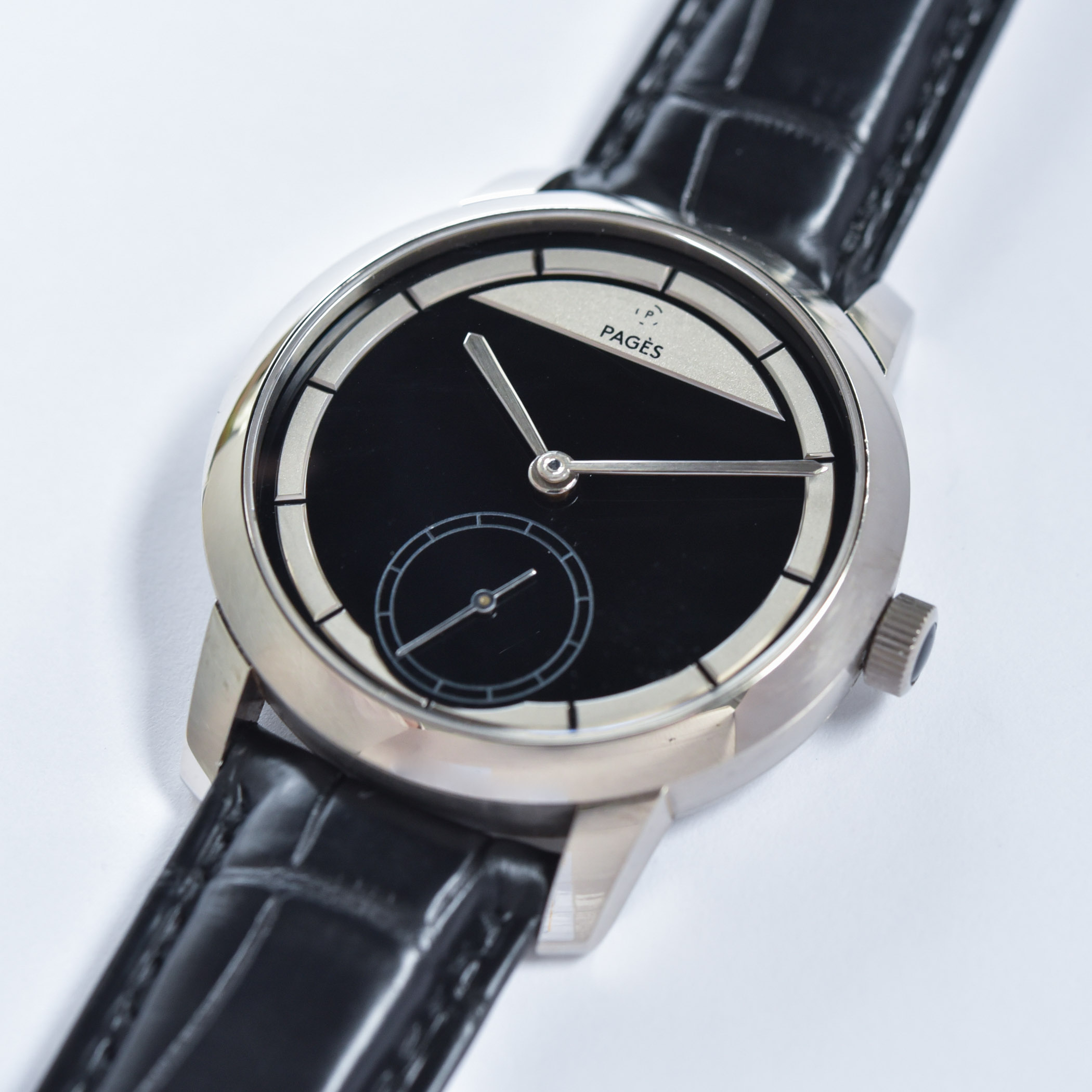
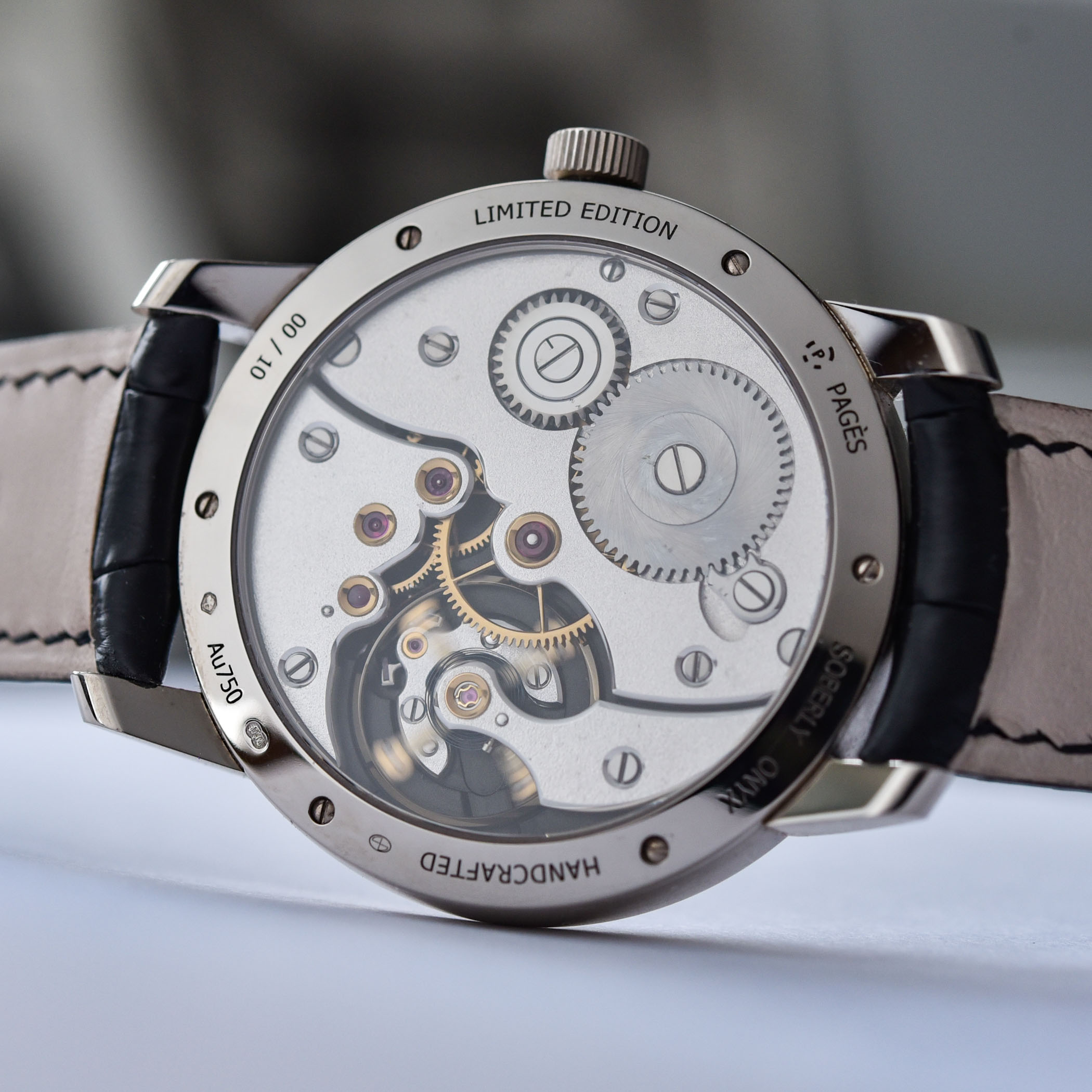

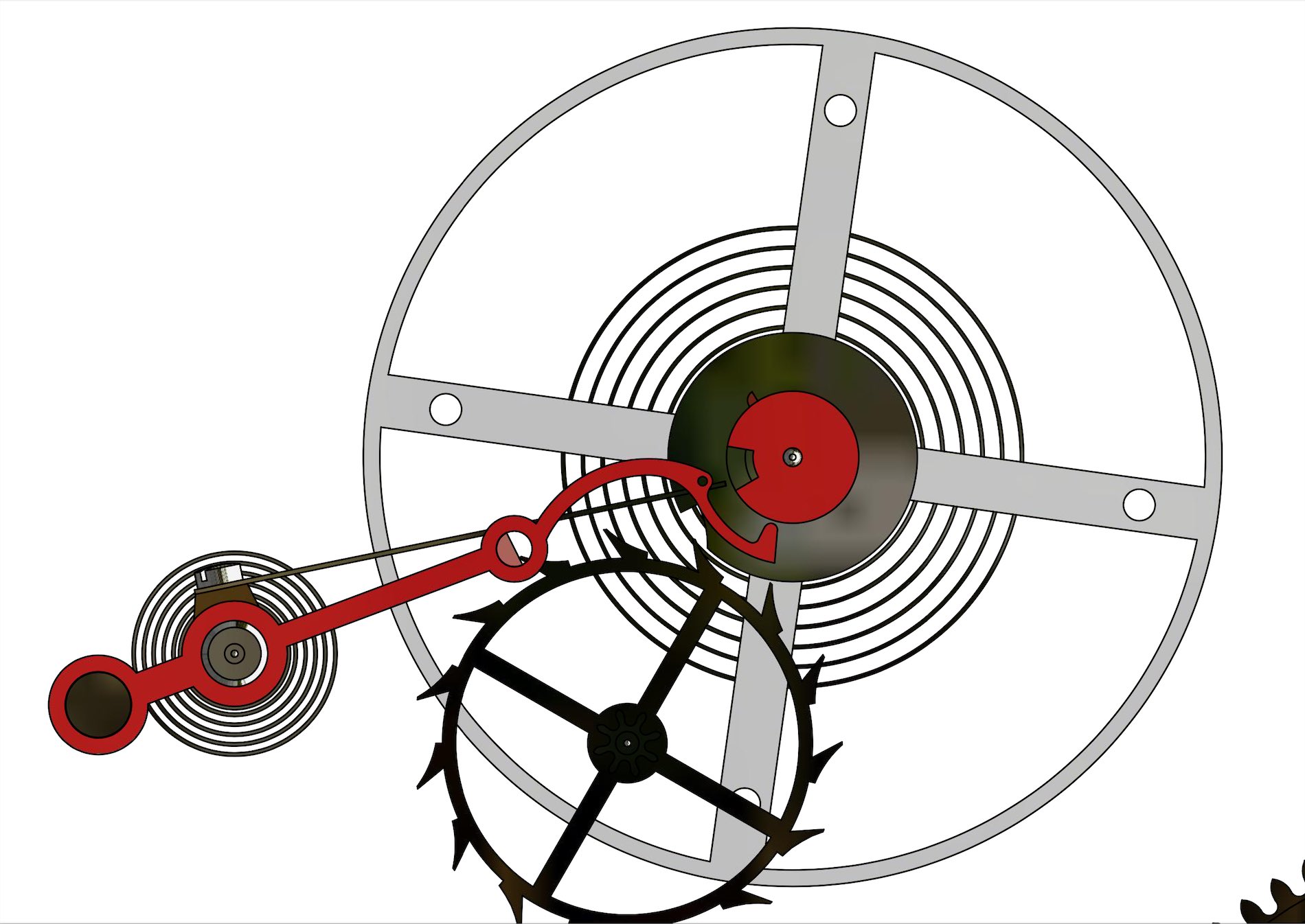
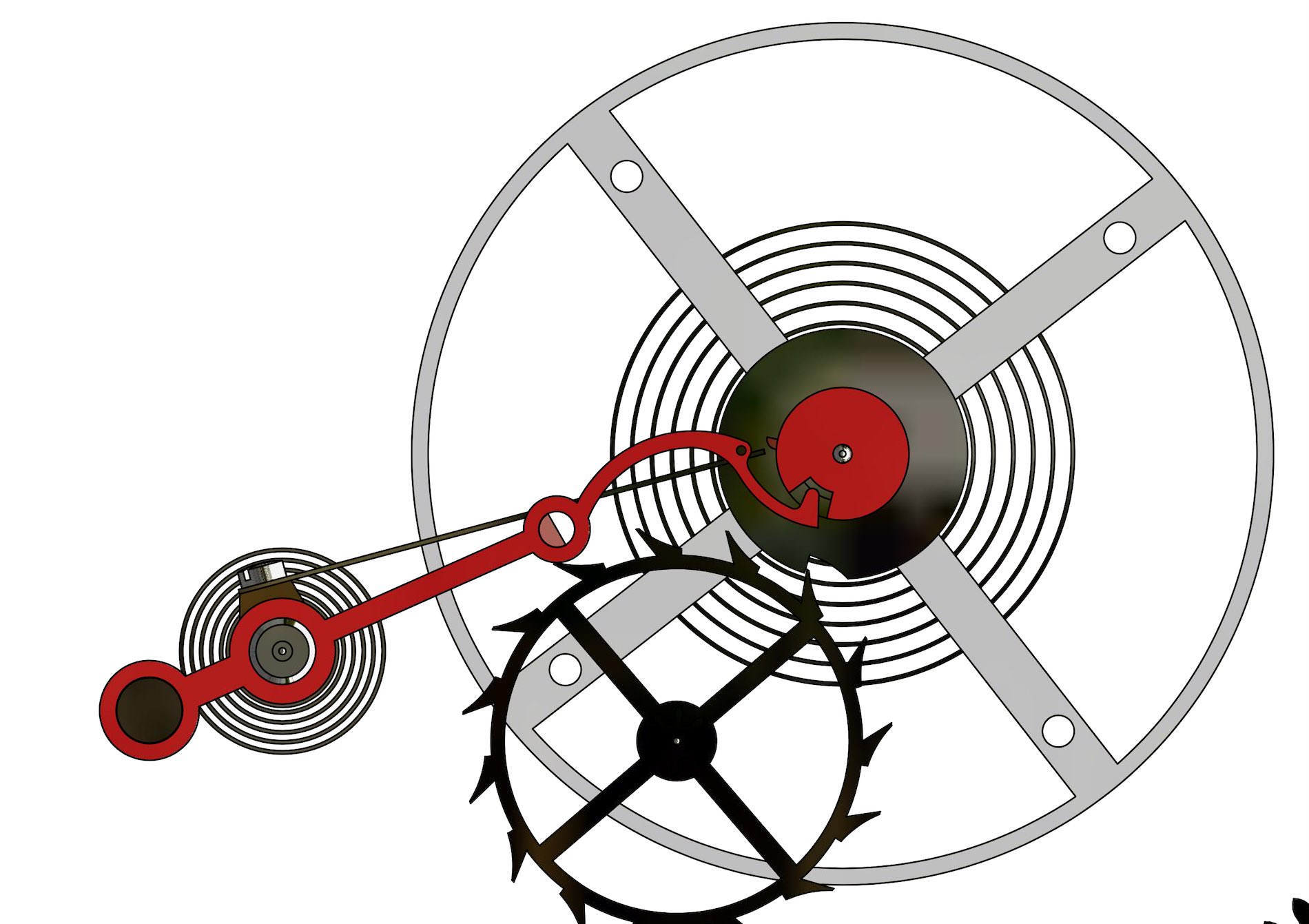

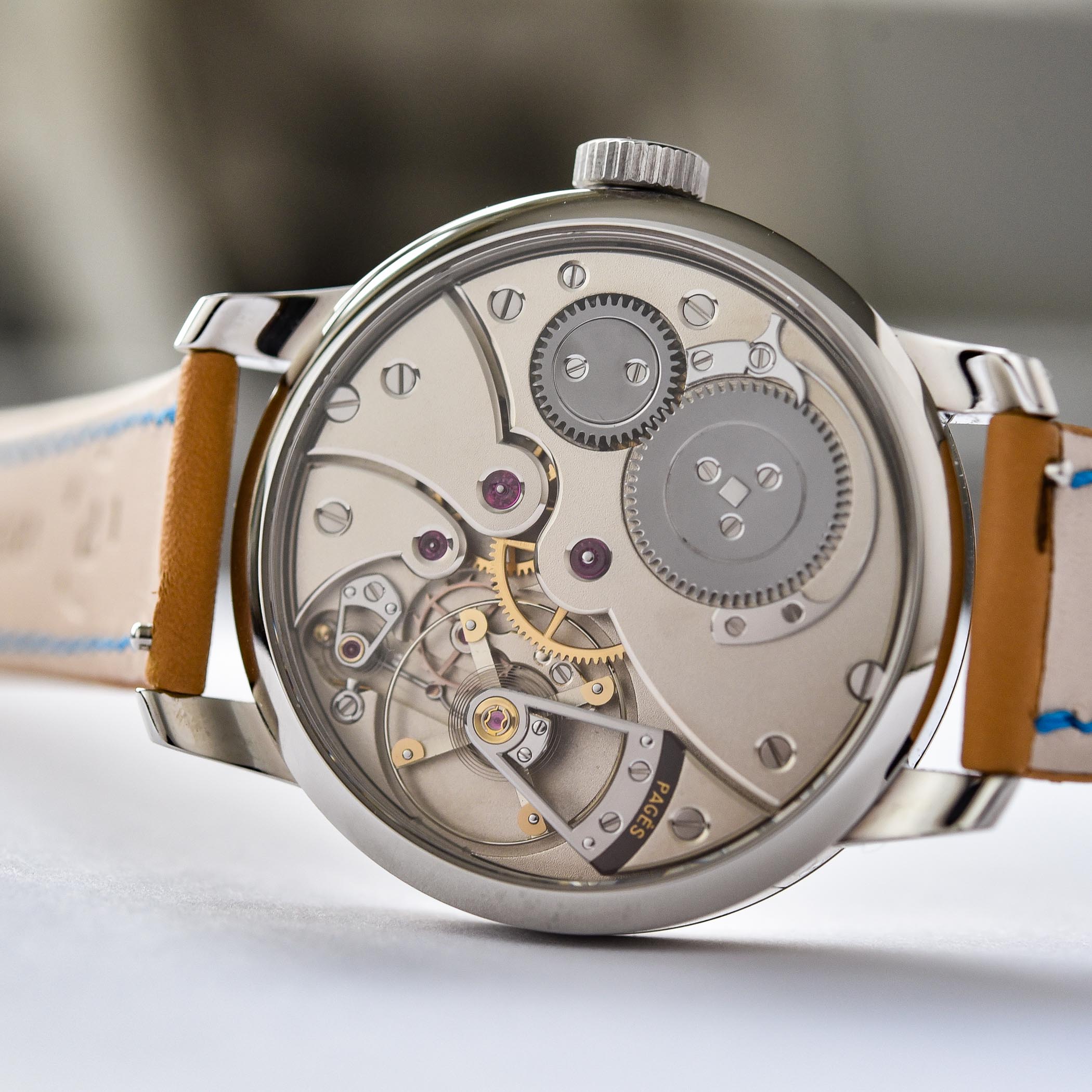
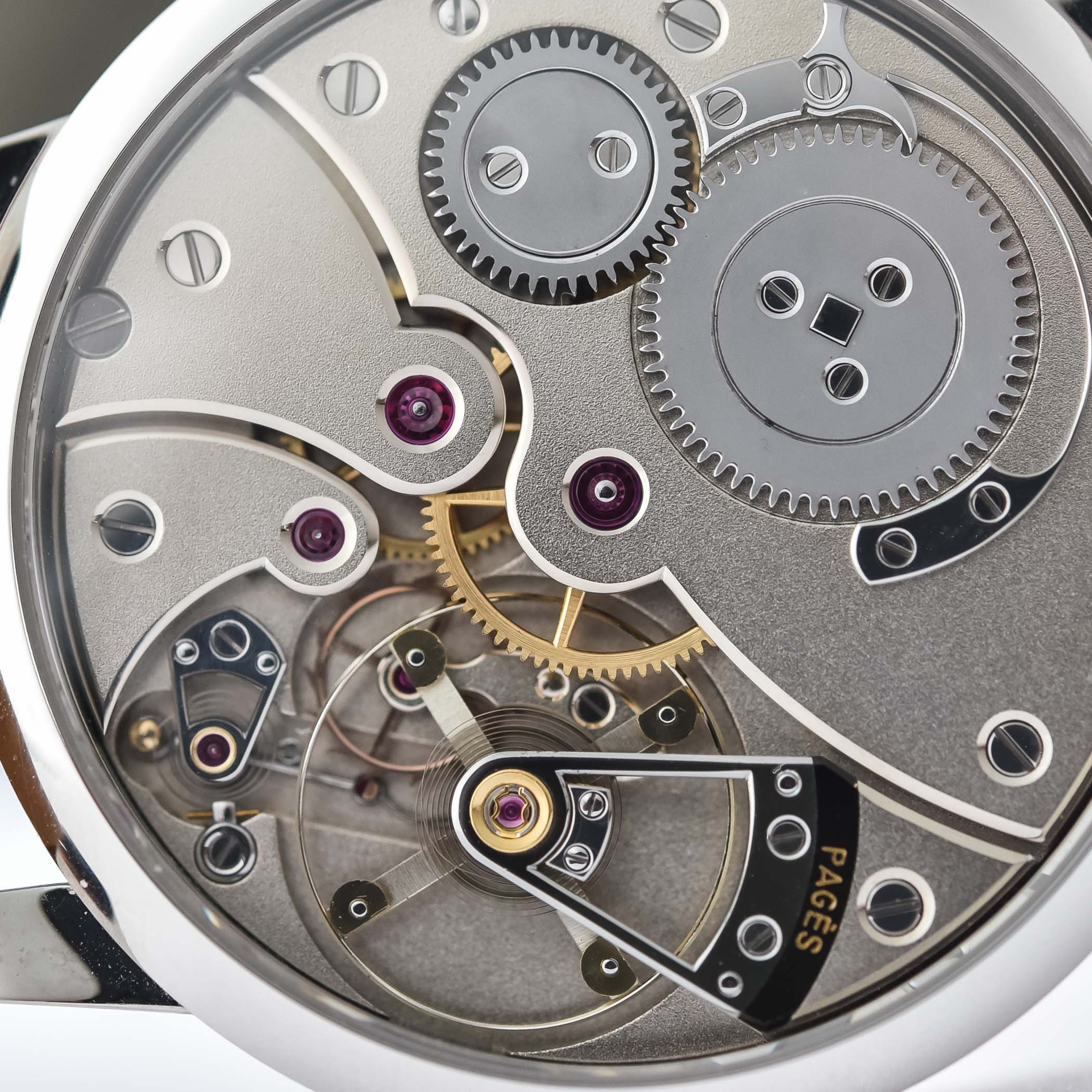
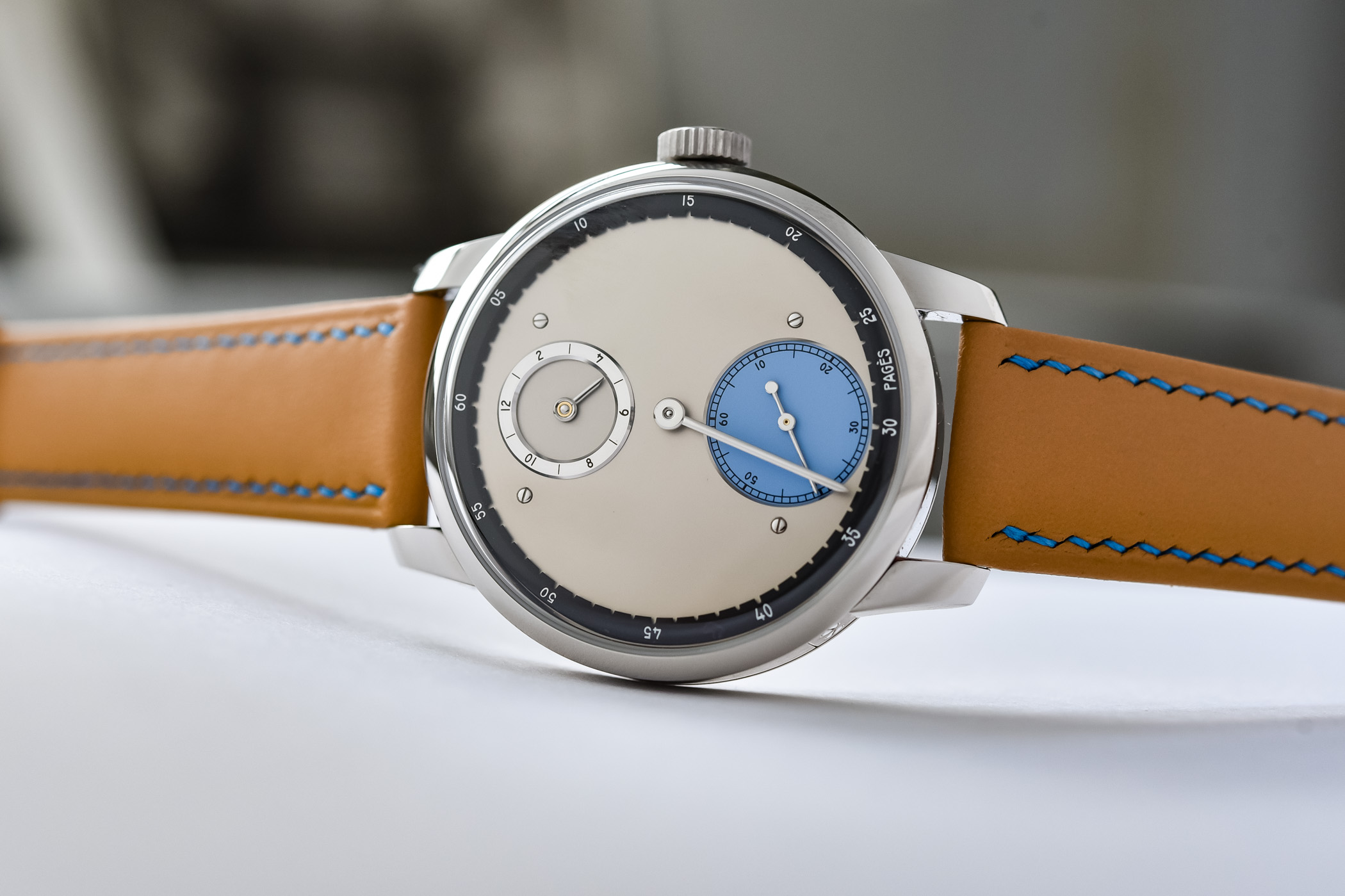
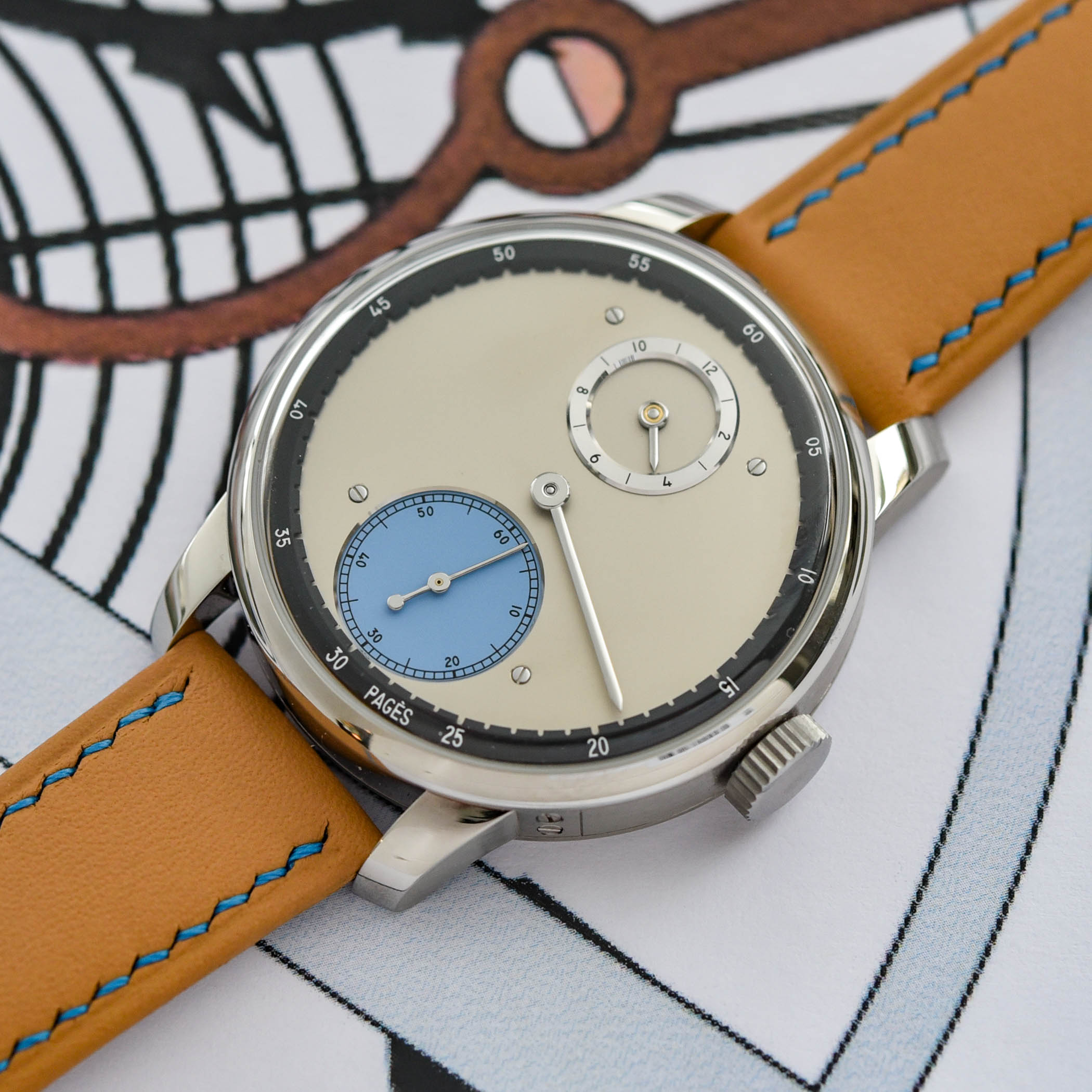
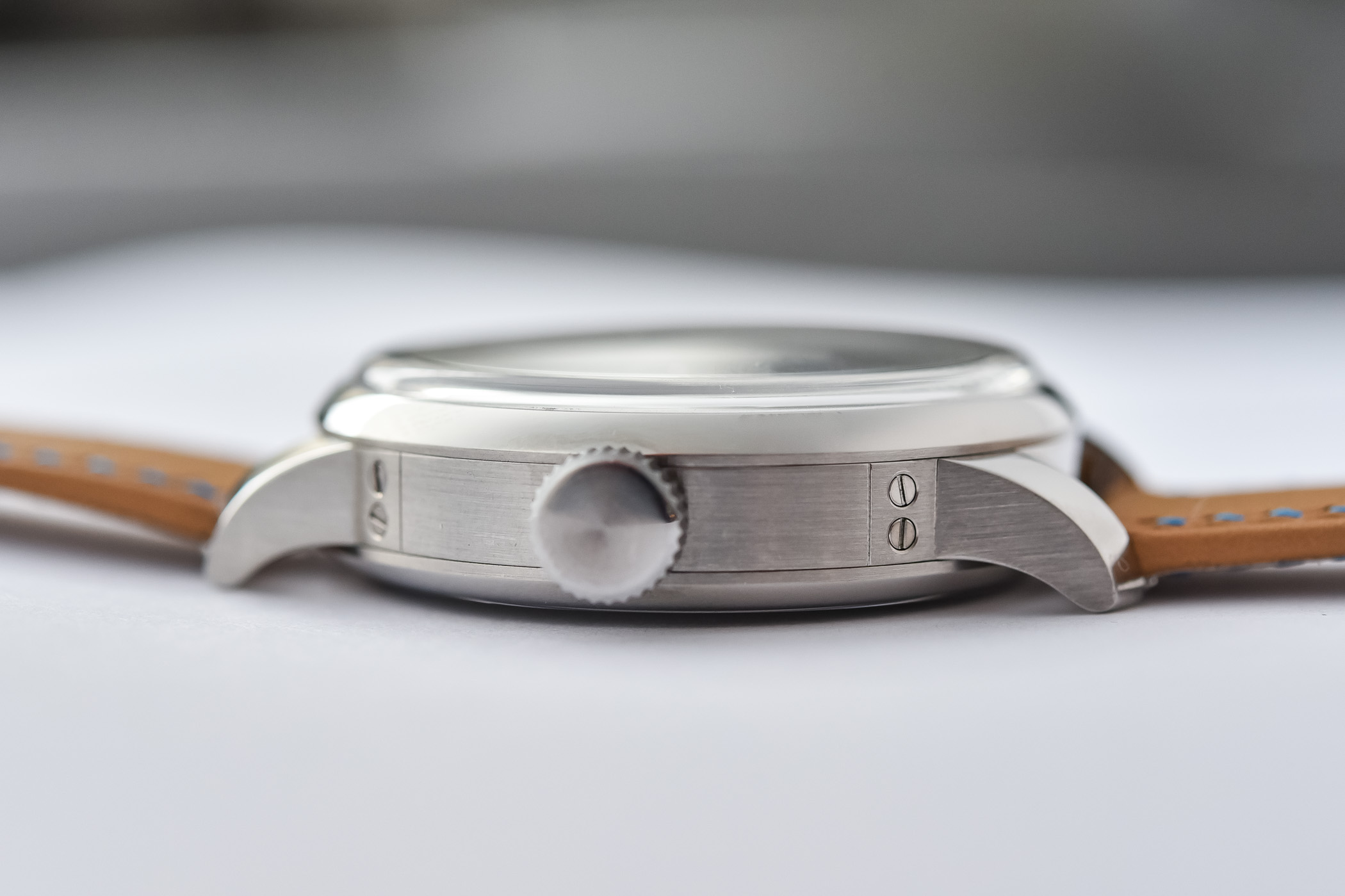
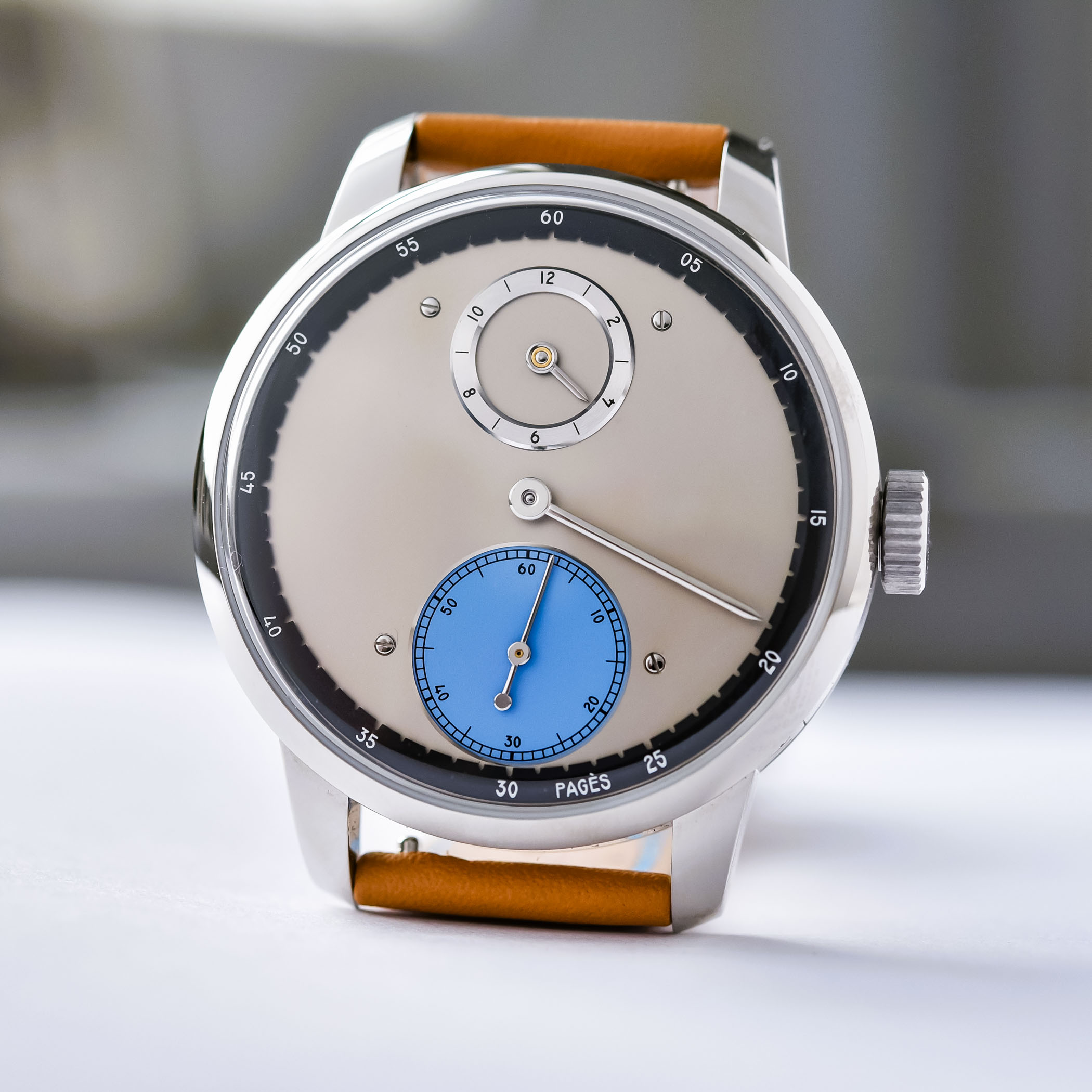
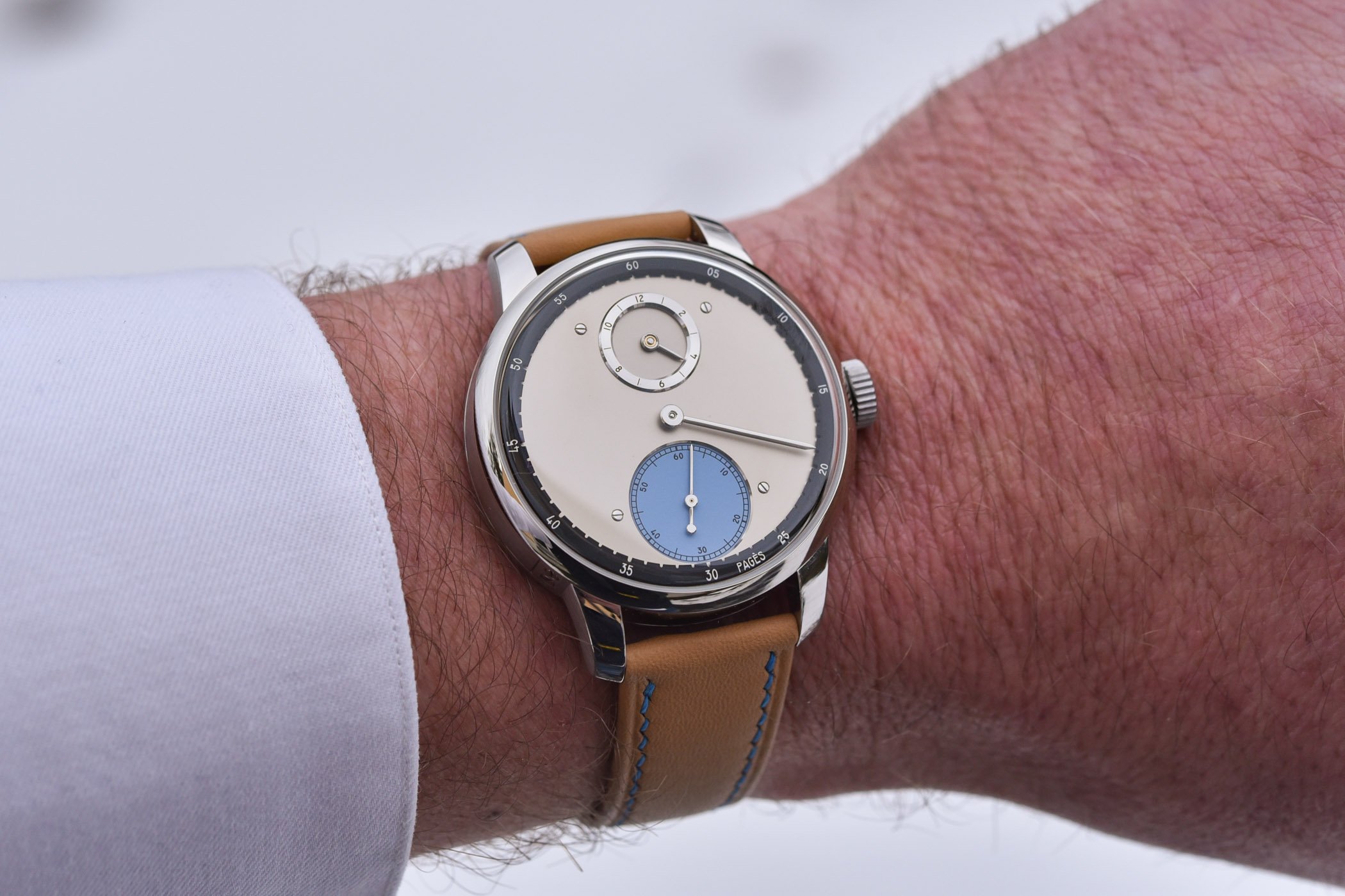



4 responses
Very impressive. Glad you mentioned Urban Jurgensen, because as far as I’m aware it was the work started by Derek Pratt then finished by Kari Voutilainen and Jean-Francois Mojon that first enabled a *true* detent to effectively work in a wristwatch. Am I correct in this belief or does the credit lie with others?
Thanks Gav – I can’t think of many attempts to adapt the detent escapement into wristwatches – obviously there is the P8, Claret also worked on it, JLC,…
“SOLUTION TO ITS WEAKNESSES” So, how does it self start? What stops it galloping? I’m not seeing any solutions here.
It is not self-starting. So you would have to give the watch a swing to get it started.